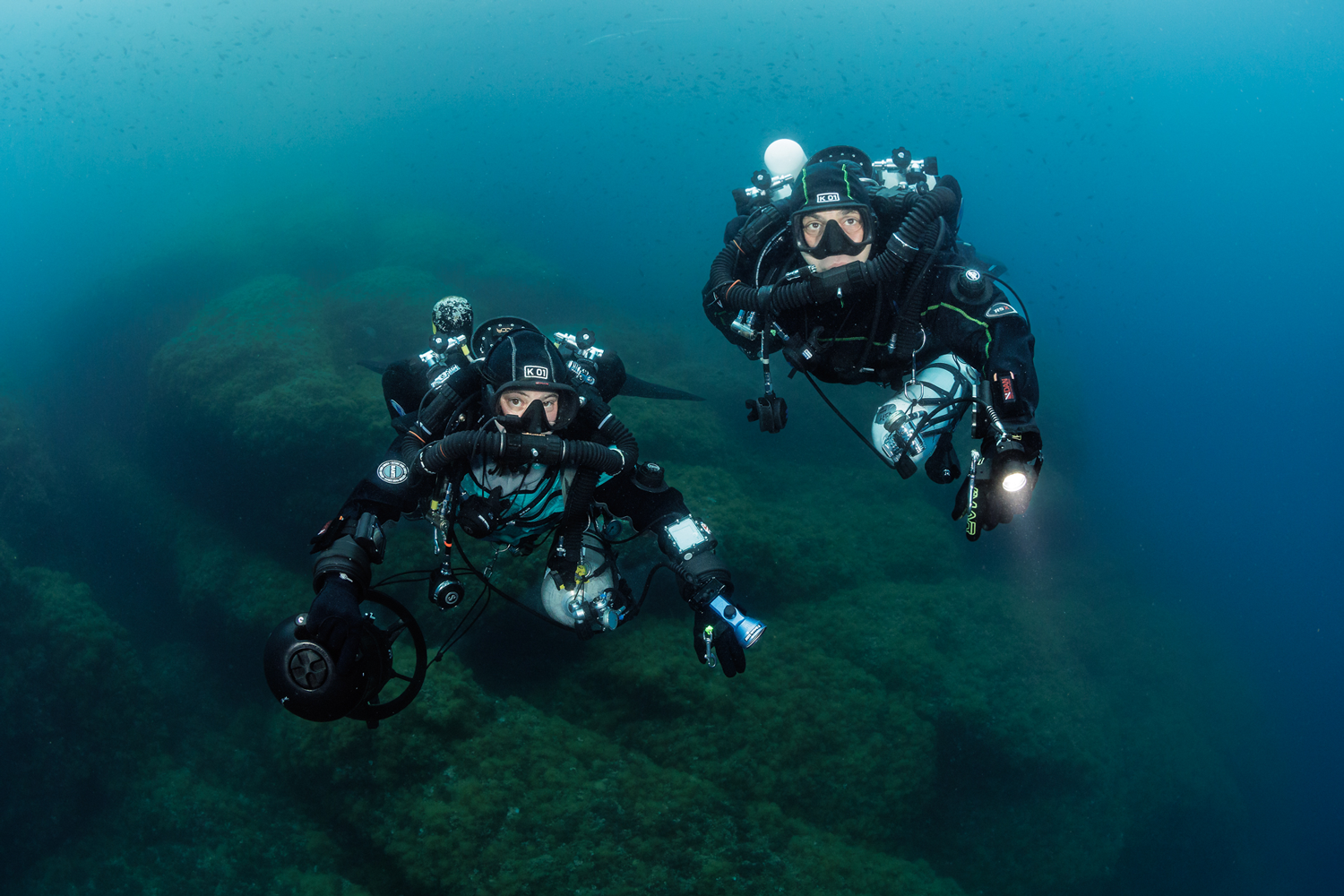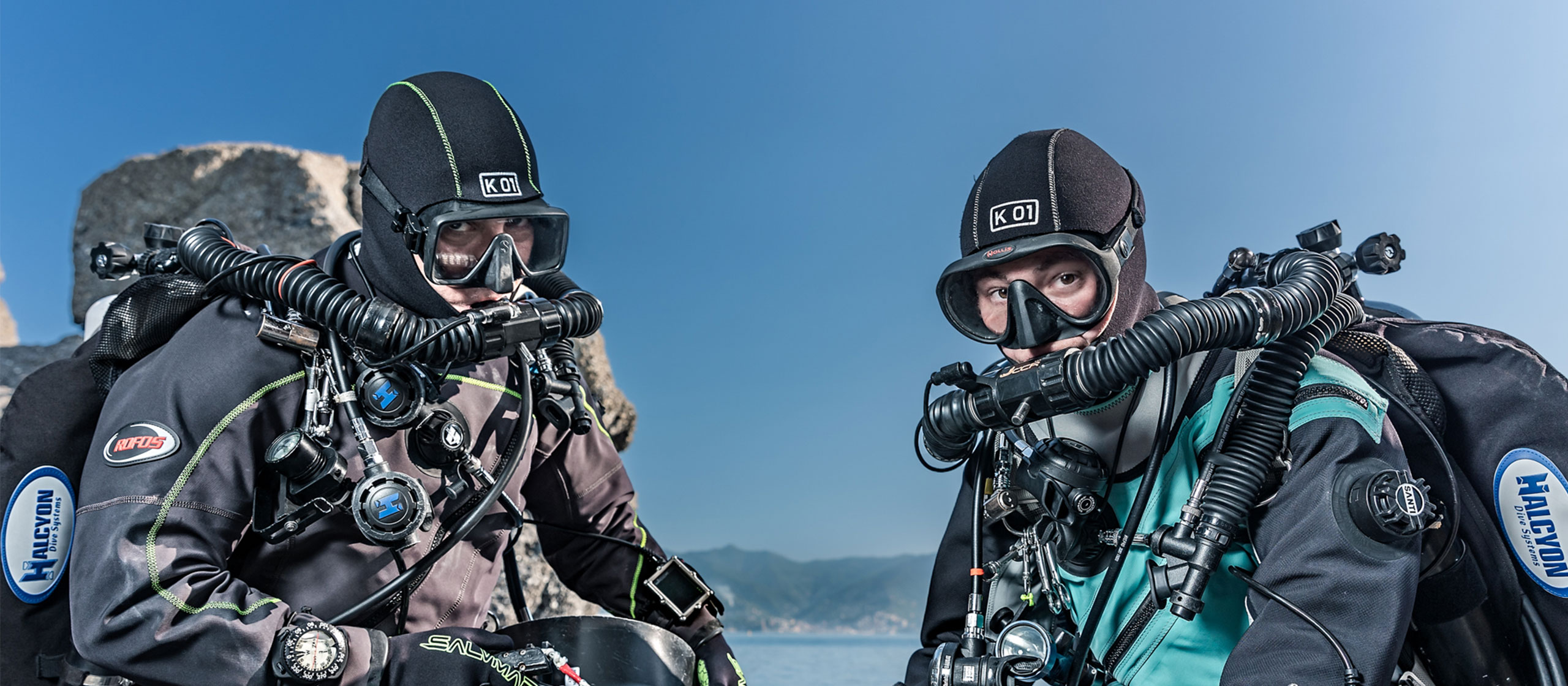Features
Pushing the Envelope: New Research into the Physiology of Deep Rebreather Diving
Deep rebreather divers are not just exploring new and rarely visited dive sites, they are also entering uncharted territory when it comes to the physiological effects of such dives. Two recent studies by hyperbaric researchers, among them DAN Europe’s own Costantino Balestra, are contributing to a small but growing trove of data.
Unlike open circuit divers, who are limited to whatever fixed gas blends they are carrying in their cylinders, closed circuit rebreather (CCR) divers have the ability to manage the composition of their breathing gas during the dive. They use this ability to maintain an optimal partial pressure of oxygen (PO2) and thereby minimise their inert gas loading. As a result, using a CCR enables shorter decompression times when compared to open circuit scuba.
In addition, being on a CCR drastically reduces the amount of gas a diver uses – an important factor considering the difficulty and cost of obtaining helium in many regions of the world. All these factors have contributed to making the shift from open circuit to CCR an important trend in technical diving over the past two decades. New manufacturers of rebreathers and electronic controllers have entered the market, CCR technology is maturing and becoming more reliable, and deep CCR dives are becoming more common.
However, there is a catch. Our knowledge of decompression and other physiological aspects of immersion relies heavily on data from a very large number of dives, the vast majority of which is relatively shallow. At depths down to 50 metres, we have a pretty accurate idea what works and what doesn’t for the average person. With increasing depth however, data becomes more scarce. Although there is a solid body of research from commercial and saturation diving to great depths, the conditions under which these dives are conducted are very different from the “bounce” (i.e., surface-to-surface) dives performed by technical divers, so that the insights from this research have only limited applicability.
The decisions on decompression procedures made by deep technical and CCR divers are somewhat speculative because the decompression algorithms they use are validated only for lesser depths.

Dehydration, reduced lung function, unpredictable bubbles
In an effort to change this unfortunate situation, two physiological studies published in 2021 are contributing to a small but growing body of knowledge. The first study was conducted during an expedition to Tahiti, whose primary objective was the collection of samples from recently discovered coral reefs in the mesophotic zone at depths of 90 and 120 metres. The divers were physically fit men, most of them in their 30s, with extensive experience. The total number of dives was 16. Researchers measured a range of physiological parameters, including spirometry (lung performance), body mass (as an indicator of hydration), hematocrit, short-term heart rate variability (HRV), and critical flicker fusion frequency (CFFF) as a potential indicator of cognitive impairment.
The researchers main findings were that there was a considerable loss of body mass due to dehydration – a decrease by 3.5 kg, from 73.5 to 70.0 kg, for the median – as well as a significant reduction in lung function immediately after diving, from which the divers eventually recovered. While CFFF is still being evaluated as an indicator of cognitive performance, the fact that no change was observed is consistent with our understanding of the use of helium to reduce narcosis and the excitatory effects of breathing hyperbaric oxygen.
In the second study, researchers accompanied a wreck diving expedition to the Red Sea, with dives to depths of 64, 97, and 123 metres. Albeit again all male, the group of divers was more diverse than the first in terms of age, body composition, and physical fitness. The focus of this study was on decompression stress, measured by a recording of venous gas emboli (VGE), or bubbles, using cardiac and subclavian Doppler echography, conducted 30 and 60 minutes after surfacing.
Costantino ‘Tino’ Balestra is a professor of physiology at the Haute École de Bruxelles-Brabant, as well as DAN Europe’s VP of Research and Education. He was a member of both research teams and kind enough to share some of his insights from the two studies with Alert Diver.
“One thing that is becoming clear to us is that it is very difficult to predict an individual diver’s VGE counts based on their saturation and desaturation, even if you take factors like age, fitness, and BMI into account,” Balestra explained. “In some people, we are seeing bubbles where there shouldn’t be any. Other people don’t seem to bubble much even though they dive relatively aggressive profiles. Individual factors appear to play a large role.
With regard to the Tahiti study, Balestra said: “Our key findings here were the temporary reduction of respiratory function and the dehydration after very deep dives. We can assume that these dives put a significant amount of strain on the body of the divers.”

Human subjects and research ethics
Conducting research into deep CCR diving has a number of challenges. “Deep CCR dives are not very common, and they tend to take place far away from university laboratories. Opportunities for research are rare, and we are charting new territory here,” Balestra said. “And there are other limitations. As a researcher, I can observe and take measurements, but I can’t tell people how to dive. That would be very unethical. Deep CCR diving is risky, people are putting their bodies on the line, and it has to be one hundred percent their own decision.”
Outlook, and a word of advice
There’s been a clear trend toward the increased use of rebreathers for deep diving, and Balestra believes this trend won’t go away any time soon. “There are so many exciting things to see, and people are fascinated by the technology,” he said. However, when asked what advice he would give to someone who is considering getting into this kind of diving, he urges caution. “First you should ask yourself, how many dives will I do per year? CCRs are far more complex to use than open circuit equipment, and it takes a lot of practice just to keep your skills sharp. In addition, a rebreather is a very expensive machine. If you do less than fifty dives per year, then I doubt it’s worth it, in terms of both risk and cost.”
And for those who decide to take the plunge?
“From a hyperbaric science standpoint: Don’t be too certain that your decompression protocol will keep you safe from DCS. There is more to it than that. What you do in your daily life and even immediately before diving may be as important as your choice of gradient factors. There is some interesting new research in that direction, and it applies not only to people who go to 120 metres. Move. Get some exercise. Here at DAN Europe, we are seeing a recent uptick in DCS incidence that we believe is related to people leading more sedentary lifestyles during the pandemic.”
References
Dugrenot, E., Balestra, C., Gouin, E. et al. Physiological effects of mixed-gas deep sea dives using a closed-circuit rebreather: a field pilot study. Eur J Appl Physiol 121, 3323–3331 (2021).
Balestra, C., Guerrero, F., Theunissen, S. et al. Physiology of repeated mixed gas 100-m wreck dives using a closed-circuit rebreather: a field bubble study. Eur J Appl Physiol 122, 515–522 (2022).
About the author
Tim Blömeke teaches recreational and technical diving in Taiwan and the Philippines. He is an avid cave, wreck, and CCR diver, as well as a contributing editor and translator for Alert Diver. He lives in Taipei, Taiwan. You can follow him on Instagram at @timblmk.

